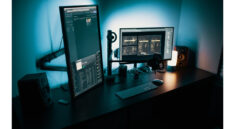Losing vital data, falling victim to information theft, or dealing with slow or down systems are consequences of poor hardware maintenance. The digital assets of companies are an increasingly valuable element for their productivity. It is for this reason that computers cannot take unnecessary risks.
Preventive Maintenance
Preventive maintenance for hardware such as Dell PowerEdge R7525 allows us to take strategic actions to anticipate the deterioration of a PC or laptop. This practice seeks to keep components in optimal condition all the time to extend their useful life and avoid system failures.
It includes two types of actions:
Cleaning And Cooling Of Physical Components
Our preventive hardware maintenance is based above all on cleaning actions regarding the physical components. The great enemy of components is dust, so removing and cleaning the fans is essential to help keep the CPU temperature within the ideal parameters.
In addition, it is essential to clean the keyboard and make sure to remove any dust stored between the keys and on the monitor or screen.
To perform these tasks, consider:
- Use suitable solvents for electrical components.
- Do not handle sensitive parts roughly.
- If in doubt, let a specialized technician handle the work.
- In the following video, you can see an example of how to clean the internal components of a CPU.
- Actions on the system (non-physical parts)
Many people believe that hardware maintenance only involves actions on the physical pieces of equipment, but system maintenance extends the life of the hardware. For example, you must verify that the hardware drivers match the latest versions available.
It also doesn’t hurt to review the software installed on your computer and get rid of those you don’t use. Removing these programs will break the mechanical components, mainly the hard disk. On the other hand, many believe there is a threat that does not affect computer hardware: viruses and malware. However, a very powerful virus can damage the physical components. It is not strange to find cases of obsolete hard drives due to firmware attacks.
Therefore, you should also be serious about having the latest antivirus and antimalware updates.
Corrective Maintenance
The second most common type of hardware maintenance is Corrective Maintenance. This consists of the repair and replacement processes in our computer’s hardware and is carried out when the components stop working optimally.
In computer science, advances are made by leaps and bounds. Staying up-to-date implies renewing hardware components since corrective maintenance will inevitably occur due to defective or obsolete parts.
This type of maintenance can include welding tasks, a graphics card replacement, or the replacement of peripheral devices such as keyboard, mouse, monitor, etc.
Corrective hardware maintenance usually focuses on common failures, such as:
Power supplies: circuit heating problems due to fan malfunction. In these cases, either the fan is replaced, the circuits are repaired, or a new source is purchased.
RAM can fail due to burns or because the pins are damaged when being touched. The solution is to change the entire card.
Hard Drive: This hardware component is mechanical, so faults can only be repaired by changing parts. Hard drives often get scratched, or physical damage occurs on the connecting pins.
Video Cards: Failures are spotted on the monitor, problems loading videos, poor resolution, or missing colors.





